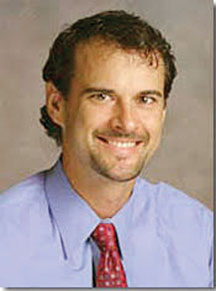Dr. Magryta: Breastfeeding
Published 12:00 am Sunday, March 1, 2020

Dr. Magryta
Breastfeeding is best. This is a truth that is undisputed.
I have been preaching this belief for as long as I have been writing. It is only a discussion for those that are capable of nursing. Recently, I received feedback about discussing alternatives for mothers that would like to breastfeed but are unable to do so. Formula that is mass produced is an obvious second rate alternative. Therefore, we will skip discussing it for now. Let us look at donor breast milk, as I see it following the research.
First off, the data is quite pathetic on the use and risks of donor breast milk in term healthy newborns.
Second, the AAP, American Academy of Pediatrics, takes a strong stance without good data for term infants.
Third, this leaves us guessing regarding risk and benefit.
Let’s try to make heads or tails of this mess.
Using donor breast milk can be an effective way to feed your newborn provided that the source of the milk is quality and the storage practice was up to standard. It is clearly beneficial in preterm newborns as a prevention mechanism against a serious disease known as necrotizing enterocolitis — a low oxygen, infectious inflammatory disease of the premature intestine. Benefits in term newborns is extrapolated primarily from the studies of formula-feeding vs breast milk from the child’s mother.
We know that breast milk is better overall than any other source of neonatal nourishment. This is not up for debate. Formula is the next best option after any form of human breastmilk.
Milk Banks provide donor breast milk that is tested for purity, macronutrient content as well as being pasteurized for safety. Milk from the milk banks are primarily for ill and/or premature infants and require a prescription from a physical to obtain.
Milk sharing is any event that allows breast milk to be given from a nursing mother to another child via friends, family, internet or any other arrangement for sharing. There are risks to be made aware of.
The risks of non-milk-banked donor milk:
The biggest risk that I could find was a hygiene concern. When using donor-provided milk, you need to be sure that the donor followed hygienic practices and that the milk does not contain elevated levels of bacteria. This is a rare but serious issue to be aware of if you choose this path.
That being said, after an exhaustive search online, I could find no cases of death or even a bad outcome in a term neonate that was fed donor breastmilk from a relative, a friend or a donor milk bank. Like the black swan analogy, this contention does not mean that the black swan does not exist. It only means that we have not seen nor heard of a negative event related to donor milk in TERM neonates. (Brant N. 2013)
On the other hand, I did find data in the very premature NICU babies. There is a death risk from breast milk derived pathogenic bacteria. That data is easily searchable and well covered by AAP statements and papers. That being said, cow’s milk-based formula is significantly more problematic to premature infants due to the NEC risk.
Safety of donor breast milk:
Bacteriological examinations of refrigerated quality donor breast milk supplies are shown to be safe for up to 72 hours. When cooled to a frozen negative 20 degrees celsius, milk can be stored for up to one month. (Ogundele M. 2000)
According to the American Academy of Pediatrics:
A new policy statement from the AAP supports using donor human milk to help boost the health of small, preterm babies when needed, but calls for screening, pasteurization and distribution through established donor milk banks to ensure safety. The policy statement in the January 2017 Pediatrics, “Donor Human Milk for the High-Risk Infant: Preparation, Safety, and Usage Options in the U.S.”, advises against using internet-based or informal human milk sharing. These sources of human milk carry the risk of bacterial or viral contamination, or exposure to medications, drugs, herbs or other substances.
Why the AAP advises against informal or internet non-milk banked human milk sharing is likely based on potential risks in an unknown person who is desperate for money providing a contaminated milk source. There are real risks in an HIV, Hepatitis B/C, actively ill person providing milk. That being said, I could find no evidence to go against a close friend or family member providing human breast milk in a donor fashion.
Therefore, I will repeat:
First: the data is scarce on the use and risks of donor breast milk in term healthy newborns. Mothers who choose this route are in unstudied waters that appear to be safe if the milk is from a well known and healthy donor. It is at your own risk. There is no way that a provider can recommend this route in today’s modern legal climate.
Second: the AAP, American Academy of Pediatrics takes a strong stance without good data. I hope they choose to study this further.
Third: this leaves us guessing at overall at risk and benefit. While I cannot recommend this method, I can provide the data as it exists.
Therefore, these decisions need to be made on a case-by-case basis by the family until more data emerges.
Dr. M
Dr. Chris Magryta is a physician at Salisbury Pediatric Associates. Contact him at newsletter@salisburypediatrics.com


